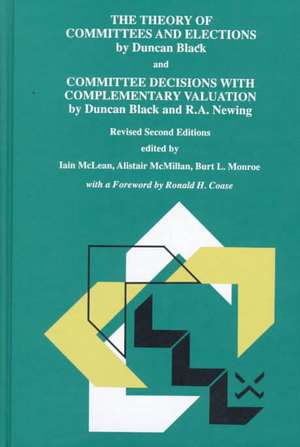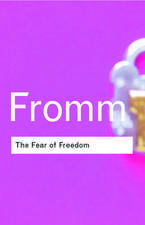The Theory of Committees and Elections by Duncan Black and Committee Decisions with Complementary Valuation by Duncan Black and R.A. Newing
Editat de Iain S. McLean, Alistair McMillan, Burt L. Monroeen Limba Engleză Hardback – 28 feb 1998
| Toate formatele și edițiile | Preț | Express |
|---|---|---|
| Paperback (1) | 1392.89 lei 6-8 săpt. | |
| SPRINGER NETHERLANDS – 5 noi 2012 | 1392.89 lei 6-8 săpt. | |
| Hardback (1) | 1233.20 lei 6-8 săpt. | |
| SPRINGER NETHERLANDS – 28 feb 1998 | 1233.20 lei 6-8 săpt. |
Preț: 1233.20 lei
Preț vechi: 1503.90 lei
-18% Nou
Puncte Express: 1850
Preț estimativ în valută:
235.98€ • 252.34$ • 196.75£
235.98€ • 252.34$ • 196.75£
Carte tipărită la comandă
Livrare economică 18 aprilie-02 mai
Preluare comenzi: 021 569.72.76
Specificații
ISBN-13: 9780792381105
ISBN-10: 0792381106
Pagini: 457
Ilustrații: LVI, 457 p.
Dimensiuni: 155 x 235 x 30 mm
Greutate: 0.89 kg
Ediția:2nd rev. ed. 1998
Editura: SPRINGER NETHERLANDS
Colecția Springer
Locul publicării:Dordrecht, Netherlands
ISBN-10: 0792381106
Pagini: 457
Ilustrații: LVI, 457 p.
Dimensiuni: 155 x 235 x 30 mm
Greutate: 0.89 kg
Ediția:2nd rev. ed. 1998
Editura: SPRINGER NETHERLANDS
Colecția Springer
Locul publicării:Dordrecht, Netherlands
Public țintă
ResearchCuprins
1 The Theory of Committees and Elections.- 1 A Committee and Motions.- 2 Independent Valuation.- 3 Can a Motion be Represented by the same Symbol on Different Schedules?.- 4 A Committee using a Simple Majority: Single-peaked Preference Curves.- 5 A Committee using a Simple Majority: other Shapes of Preference Curves.- 6 A Committee using a Simple Majority: any Shapes of Preference Curves, Number of Motions Finite.- 7 Cyclical Majorities.- 8 When the Ordinary Committee Procedure is in use the Members’ Scales of Valuation may be Incomplete.- 9 Which is the most suitable Method of Election?.- 10 Examination of some Methods of Election in Single-member Constituencies.- 11 Proportional Representation.- 12 The Decisions of a Committee using a Special Majority.- 13 The Elasticity of Committee Decisions with an Altering Size of Majority.- 14 The Elasticity of Committee Decisions with alterations in the Members’ Preference Schedules.- 15 The Converse Problem: the Group of Schedules to Correspond to a Given Voting Matrix.- 16 A Committee using a Simple Majority: Complementary Motions.- 17 International Agreements, Sovereignty and the Cabinet.- 2 History of the Mathematical Theory of Committees and Elections (excluding proportional representation).- 18 Borda, Condorcet and Laplace.- 19 E. J. Nanson and Francis Galton.- 20 The Circumstances in which Rev. C. L. Dodgson (Lewis Carroll) wrote his Three Pamphlets.- 21 Appendix: Text of Dodgson’s Three Pamphlets and of ‘The Cyclostyled Sheet’.- 3 Committee Decisions with Complementary Valuation.- Committee Decisions with Complementary Valuation.- 4 Related Papers.- Appendix 1 On Arrow’s Impossibility Theorem.- Appendix 2 The Unity of Political and Economic Science.- Appendix 3 Transitivity and non-transitivity ofMajorities.- Appendix 4 Partial Justification of the Borda Count.- Appendix 5 Arrow’s work and the Normative Theory of Committees.













